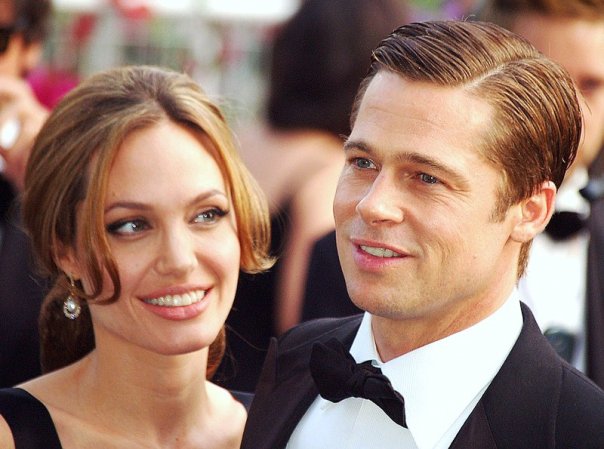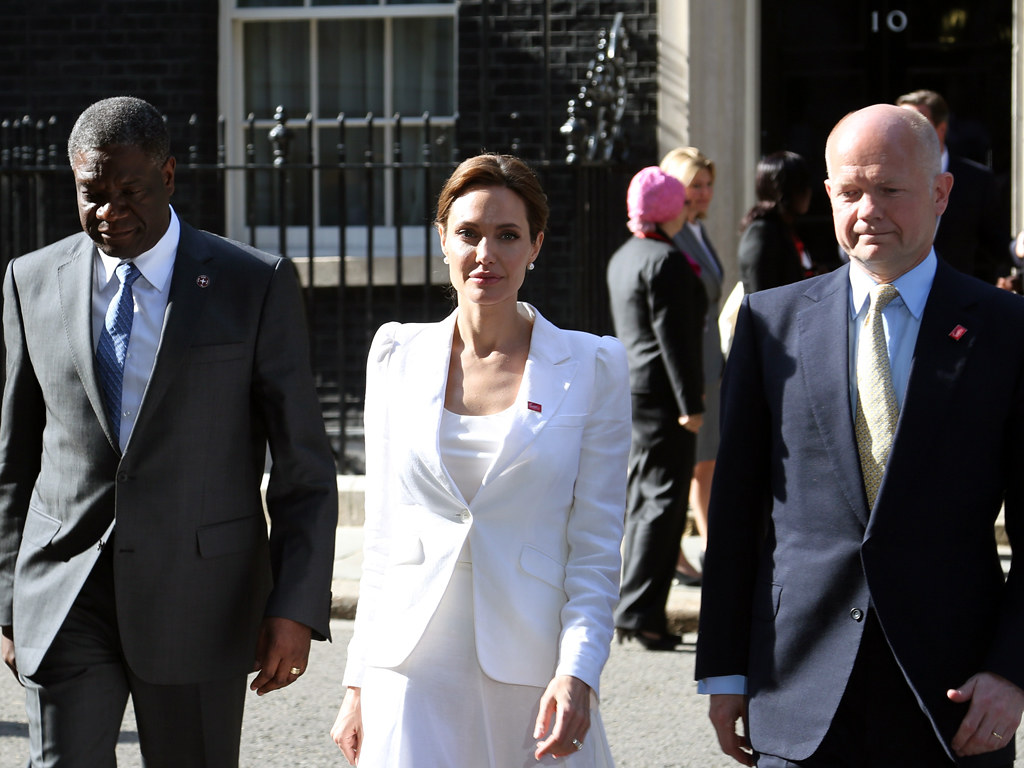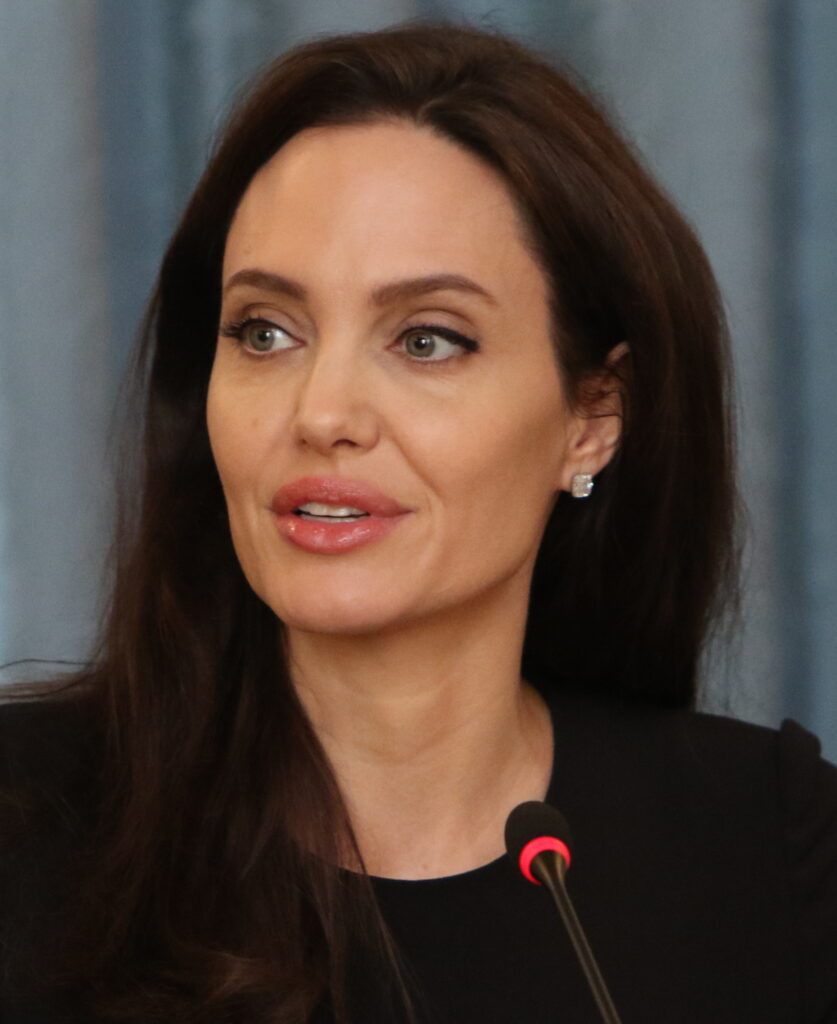
Angelina Jolie. The name itself conjures images of Hollywood royalty, a global humanitarian, and an undeniable force both on and off screen. For decades, her performances have captivated audiences, earning her numerous accolades and cementing her status as one of the industry’s most compelling figures. Yet, beyond the glare of blockbuster franchises and Oscar-winning dramatic turns, Jolie has quietly, and sometimes not so quietly, cultivated a parallel career as a filmmaker, stepping behind the camera to tell stories that resonate deeply with her personal convictions and artistic aspirations.
This transition from revered actress to an auteur with a distinct vision is rarely a smooth one, especially for someone under such intense public scrutiny. Every creative choice, every thematic exploration, and indeed, every critical response to her directorial endeavors becomes amplified, dissected, and often, hotly debated. Her journey as a director is a testament to an artist refusing to be confined, driven by a desire to craft narratives that challenge, inform, and provoke thought, even if those narratives sometimes polarize critics and audiences alike.
In this in-depth exploration, we delve into Angelina Jolie’s significant directorial and producing projects. We will examine the critical reception that has often shadowed these works, tracing her evolution from a first-time documentarian to a seasoned filmmaker tackling complex global issues and intimate personal dramas. Her recent ventures, in particular, highlight a bold creative trajectory that continues to defy expectations and, in some cases, spark significant discussion and disagreement among industry observers.
1. **A Place in Time (2007): Her Quiet Entry into Directing**
Before her dramatic features captured international attention, Angelina Jolie embarked on her directorial path with a project far removed from the typical Hollywood launchpad: the 2007 documentary, “A Place in Time.” Distributed through the National Education Association, this initial foray behind the camera was less about box office success and more about exploration and advocacy, quietly signaling a burgeoning interest in storytelling that diverged from her established acting persona. It provided a glimpse into her desire to leverage her platform for educational and humanitarian purposes, setting a precedent for her future thematic choices.
The nature of “A Place in Time” as a documentary, and its association with the National Education Association, underscores a clear intent to inform and educate rather than simply entertain. This project, while not widely publicized or critically dissected in the mainstream media, was a foundational experience. It allowed Jolie to hone her storytelling instincts in a less pressurized environment, experimenting with narrative structure and thematic depth without the commercial expectations that accompany a major feature film.
In many ways, “A Place in Time” was an understated yet crucial precursor to her more ambitious projects. It hinted at the deep empathy and commitment to real-world issues that would become hallmarks of her subsequent films. This early work served as a quiet declaration of her intention to engage with cinema as a medium for social commentary and human connection, laying the groundwork for the powerful, often challenging narratives she would later bring to the screen.
Read more about: Decoding Fear: Exploring Pivotal Moments in Cinematic Horror History

2. **In the Land of Blood and Honey (2011): A Bold Humanitarian Statement**
Angelina Jolie made her feature directorial debut with “In the Land of Blood and Honey” in 2011, a project that immediately stamped her as a filmmaker unafraid to tackle harrowing global events. The film, a poignant and brutal love story set against the backdrop of the 1992–95 Bosnian War, was conceived with a profound humanitarian purpose. Jolie explicitly stated her aim was “to rekindle attention for the survivors,” a motivation directly stemming from her extensive field visits to Bosnia and Herzegovina as a UNHCR Goodwill Ambassador, showcasing her commitment to global awareness.
Her dedication to authenticity was paramount in the making of “In the Land of Blood and Honey.” She insisted on casting only actors from the former Yugoslavia, including lead stars Goran Kostić and Zana Marjanović, and meticulously incorporated their personal wartime experiences into her screenplay. This approach was not merely a stylistic choice but a deeply ethical one, ensuring the narrative was steeped in genuine lived experiences and offered an insider’s perspective on the devastating conflict, striving for a resonance that Hollywood productions often miss.
Upon its release, the film garnered “mixed reviews,” a reception that perfectly encapsulated the difficulty of its subject matter and Jolie’s unflinching portrayal. Todd McCarthy of The Hollywood Reporter acknowledged, “Jolie deserves significant credit for creating such a powerfully oppressive atmosphere and staging the ghastly events so credibly, even if it is these very strengths that will make people not want to watch what’s onscreen.” This critical observation highlighted the film’s artistic merits while also anticipating the emotional toll it would take on viewers, a testament to its raw realism.
Despite the challenging critical landscape, the film’s impact extended beyond conventional reviews. “In the Land of Blood and Honey” earned a nomination for a Golden Globe Award for Best Foreign Language Film, a significant acknowledgment for a debut director. Furthermore, Jolie’s efforts were recognized by the very people whose stories she sought to tell, as she was named an honorary citizen of Sarajevo for raising awareness of the war. These accolades underscore the film’s cultural significance and its success in achieving its humanitarian goals, irrespective of a uniform critical consensus.

3. **Unbroken (2014): The Epic Challenge and Awards Season Hype**
Following her powerful debut, Angelina Jolie undertook an even more ambitious project with her second directorial venture, “Unbroken” (2014). This sweeping World War II drama chronicled the extraordinary life of Louis Zamperini, an Olympic track star and soldier who survived a harrowing plane crash and endured two brutal years in a Japanese prisoner-of-war camp. Jolie not only directed but also served as a producer under her Jolie Pas banner, demonstrating a deeper immersion into the multifaceted demands of large-scale filmmaking. The narrative was meticulously adapted from Laura Hillenbrand’s acclaimed book, “Unbroken: A World War II Story of Survival, Resilience, and Redemption,” with a screenplay crafted by the esteemed Coen brothers, signaling the project’s high artistic pedigree.
The anticipation surrounding “Unbroken” was palpable, especially as early buzz positioned it as a strong contender for major awards. With its compelling true story, star director, and heavyweight screenwriters, the film was widely “considered a likely Best Picture and Best Director contender.” This initial awards season hype reflected the industry’s respect for the project’s scale and ambition, and a growing recognition of Jolie’s evolving capabilities as a filmmaker. It was a narrative designed to appeal to both critics and the Academy, promising an epic tale of human resilience.
However, despite the considerable expectations, “Unbroken” ultimately received “mixed reviews” and garnered “little award recognition” in the major categories. This outcome was a surprising turn given its initial momentum. Critics acknowledged its “impeccable craftsmanship and sober restraint,” as noted by Justin Chang of Variety magazine, yet he also characterized it as “an extraordinary story told in dutiful, unexceptional terms.” This sentiment captured a common critical refrain: while technically accomplished, some felt the film lacked the transcendent emotional depth expected of such a powerful narrative, preventing it from reaching the pinnacle of critical acclaim.
Even so, “Unbroken” was not without its commendations. It was named one of the best films of the year by prestigious organizations like the National Board of Review and the American Film Institute, indicating that a significant segment of critics and industry bodies recognized its quality. Furthermore, the film proved to be a global success at the box office, demonstrating its considerable appeal to international audiences. This commercial triumph, alongside select critical praise, solidified Jolie’s standing as a director capable of helming major studio productions that resonated with a broad viewership, even if a consensus on its artistic greatness remained elusive.

4. **By the Sea (2015): A Personal Vision, A Critical Divide**
Angelina Jolie’s next directorial effort, “By the Sea” (2015), represented a stark departure in scale and tone from her previous works, diving into a deeply intimate marital drama. This project was particularly noteworthy as it marked her first on-screen collaboration with her then-husband, Brad Pitt, since their blockbuster hit “Mr. & Mrs. Smith” a decade prior. More profoundly, Jolie not only directed but also penned the screenplay, crafting a narrative described as a “deeply personal project” that drew explicit inspiration from her own mother’s life. This film was an intensely personal artistic expression, reflecting her desire to explore complex emotional landscapes.
The highly personal nature of “By the Sea” did not, however, shield it from a decidedly challenging critical reception. Critics largely “dismissed it as a ‘vanity project’,” a label that often implies self-indulgence rather than genuine artistic endeavor, contributing to an “overall poor reception.” This particular criticism resonated deeply with the topic’s focus on projects “outraging critics,” as the film became a lightning rod for discussions about celebrity filmmaking and the perceived disconnect between artistic intent and audience engagement.
Stephanie Merry, writing for The Washington Post, articulated this critical sentiment effectively, observing its “dearth of genuine emotion.” She stated, “By the Sea is dazzlingly gorgeous, as are its stars. But peeling back layer upon layer of exquisite ennui reveals nothing but emptiness, sprinkled with stilted sentiments.” This review underscored the prevalent feeling that while visually stunning and impeccably cast, the film failed to connect on an emotional level, leaving critics feeling cold despite its star power and grand aesthetic. The critique was less about technical flaws and more about an emotional inaccessibility that frustrated reviewers.
The commercial performance of “By the Sea” further mirrored its critical challenges. Despite featuring two of Hollywood’s most recognized and bankable stars, the film received “only a limited release,” significantly curtailing its reach to general audiences. This commercial underperformance, combined with the harsh critical appraisals, marked “By the Sea” as a significant point of divergence in Jolie’s directorial journey, highlighting the risks inherent in crafting such an intensely personal and introspective work, particularly one that challenges mainstream narrative expectations. It served as a potent example of how an artist’s personal vision can sometimes clash with public and critical expectations.
Angelina Jolie’s journey behind the camera has consistently demonstrated a filmmaker profoundly driven by stories that matter, narratives that stretch beyond the conventional confines of Hollywood entertainment. Having explored the genesis of her directorial career and the often-polarizing reception of her initial features, it becomes clear that her work is marked by a refusal to shy away from complex, real-world issues or deeply personal introspection. As we continue to chart her evolution, we observe a director who, despite critical divides, remains steadfast in her commitment to shedding light on global narratives and challenging audiences, even venturing into unexpected creative realms.

5. **First They Killed My Father (2017): A Return to Roots and Humanitarian Storytelling**
Following the intensely personal and critically divided “By the Sea,” Angelina Jolie’s next directorial endeavor, “First They Killed My Father” (2017), marked a poignant return to her humanitarian roots and her deep connection with Cambodia. This project was not merely a film but a profoundly personal narrative, directly influenced by her efforts to connect her Cambodian-born adopted son with his heritage. Set during the brutal Khmer Rouge era, the drama once again allowed Jolie to seamlessly merge her filmmaking aspirations with her unwavering commitment to humanitarian causes, creating a work that was both artistically ambitious and socially significant.
Her dedication to authenticity and impact was paramount in the production of this film. Jolie co-wrote the screenplay with her longtime friend Loung Ung, whose harrowing memoirs about the regime’s child labor camps served as the source material. This collaborative approach ensured the narrative was steeped in lived experience, offering an unflinching look at one of history’s most tragic periods. Significantly, the film was produced directly for Netflix, a strategic move that not only provided a global platform but also facilitated the use of an exclusively Khmer cast and script, emphasizing its primary intention for a Cambodian audience.
“First They Killed My Father” garnered a notably more positive critical response than her previous intimate drama. Rafer Guzmán of Newsday commended Jolie as a “skilled and sensitive filmmaker” for her ability to “convincingly depict the illogical hell of the Khmer Rouge era.” This recognition underscored a maturation in her directorial craft, particularly in handling sensitive historical material with both nuance and power. The film’s critical success was further solidified by nominations for the Golden Globe Award for Best Foreign Language Film and the BAFTA Award for Best Film Not in the English Language, reflecting its international acclaim and artistic merit.
The film served as a powerful testament to Jolie’s sustained growth as a director and her ability to tell stories that resonate deeply on a global scale. By focusing on a Cambodian perspective and utilizing local talent, she crafted a narrative that transcended cultural barriers, highlighting universal themes of survival, trauma, and resilience. This project reinforced her unique position as a filmmaker who consistently leverages her platform to amplify marginalized voices and bring critical historical events to wider consciousness, demonstrating a clear evolution in her thematic and stylistic choices.

6. **The Outsiders (2024): A Surprising Foray into Broadway**
Just when the industry might have begun to anticipate Angelina Jolie’s next cinematic move, she delivered an unexpected, yet utterly compelling, pivot that showcased the breadth of her creative ambitions: a foray into theater production. In 2024, Jolie stepped into the role of producer for the musical “The Outsiders,” a Broadway adaptation of S.E. Hinton’s classic novel. This venture into live theater was a striking departure from her established film career, signaling a desire to explore new mediums for storytelling and to broaden her influence within the entertainment industry beyond the silver screen.
Her involvement as a producer on “The Outsiders” was far from a peripheral role; it was a significant commitment that ultimately culminated in one of the most prestigious accolades in theater. The musical, which resonated with both critics and audiences, captivated Broadway with its powerful narrative and innovative staging. The ultimate recognition of this project came when “The Outsiders” won the Tony Award for Best Musical, a triumph that cemented Jolie’s success in an entirely different creative landscape and underscored her astute judgment as a tastemaker and facilitator of impactful art. This significant win highlighted her ability to identify and nurture projects with profound artistic and commercial potential, regardless of the medium.
This move into Broadway production offers compelling insight into Jolie’s evolving artistic identity. It suggests a filmmaker and humanitarian who is not merely confined to one form of expression but is continuously seeking diverse platforms to explore narratives that speak to universal human experiences, particularly those focused on youth and societal challenges. Her engagement with “The Outsiders” also demonstrates her strategic acumen in an industry that increasingly values multifaceted talent, proving her capabilities extend well beyond directing and acting into the intricate world of theatrical production and its unique demands.

7. **Without Blood (2024): The Latest Provocation and Continued Evolution**Looking to the immediate future, Angelina Jolie’s latest directorial project, the 2024 war drama “Without Blood,” represents a pivotal moment in her continuing evolution as a filmmaker. This upcoming film signals a return to the intense, globally focused narratives that characterized her earlier work like “In the Land of Blood and Honey,” yet with the added layers of experience and refinement gained from her subsequent projects. Anticipation is already mounting for this new endeavor, which is poised to once again spark considerable discussion and critical analysis given her history of tackling challenging subject matter and her increasingly distinct authorial voice.
Looking to the immediate future, Angelina Jolie’s latest directorial project, the 2024 war drama “Without Blood,” represents a pivotal moment in her continuing evolution as a filmmaker. This upcoming film signals a return to the intense, globally focused narratives that characterized her earlier work like “In the Land of Blood and Honey,” yet with the added layers of experience and refinement gained from her subsequent projects. Anticipation is already mounting for this new endeavor, which is poised to once again spark considerable discussion and critical analysis given her history of tackling challenging subject matter and her increasingly distinct authorial voice.
“Without Blood” is an ambitious undertaking, with Jolie not only directing but also taking on writing and producing credits. It is based on the acclaimed novel by Alessandro Baricco, a choice that immediately signals a literary and emotionally rich narrative at its core. The film boasts a compelling cast featuring Salma Hayek and Demián Bichir, two actors known for their powerful dramatic performances. Their involvement suggests a project built on strong character dynamics and a nuanced exploration of the human condition amidst conflict, a thematic territory Jolie has shown a profound commitment to throughout her directing career.
This project further solidifies Jolie’s dedication to international storytelling and her willingness to explore the profound impact of war and its aftermath on individuals and societies. By adapting a novel from an acclaimed European author and featuring a diverse, international cast, “Without Blood” aligns perfectly with her long-standing commitment to global humanitarian issues, reflecting a sophisticated approach to filmmaking that transcends national boundaries. It is expected to delve into the psychological wounds of conflict, examining how past traumas echo through present lives, a theme she has touched upon in previous works with increasing depth.
Given the intensity of the subject matter and Jolie’s personal connection to humanitarian advocacy, “Without Blood” is keenly awaited by industry observers and general audiences alike. Her choice to delve back into a war drama, a genre she introduced herself to with her directorial debut, demonstrates a full-circle journey, yet with the experience of a decade of filmmaking under her belt. This latest work is expected to be a mature, unflinching examination, potentially igniting fresh critical dialogue about her artistic choices and her capacity to transform challenging literary works into compelling cinematic experiences, thus keeping her at the forefront of discussions surrounding impactful, globally relevant cinema.
Angelina Jolie’s directorial career is a compelling narrative of an artist’s unwavering commitment to purpose-driven storytelling, evolving from quiet documentaries to critically acclaimed dramas and even Broadway triumphs. Her journey showcases a filmmaker consistently drawn to narratives that challenge, inform, and explore the profound complexities of the human experience, often through the lens of global conflicts and personal resilience. With each project, Jolie reaffirms her distinct vision, demonstrating a singular dedication to leveraging her platform to craft meaningful art that resonates far beyond the screen or stage. Her trajectory ensures that her future endeavors, particularly those poised to delve into the depths of human stories, will continue to command significant attention and critical discourse within the ever-evolving landscape of the entertainment industry.



